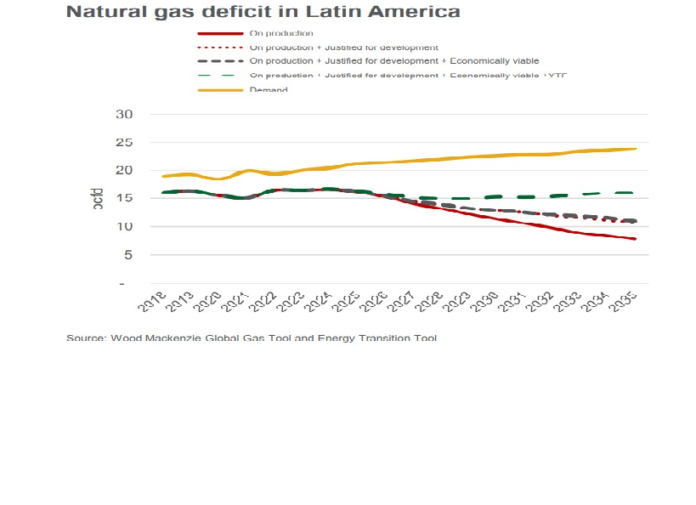- Net imports to potentially double by 2035, ranging between 7-to-12 bcfd
With several challenges facing new gas developments in Latin America, supply will be unable to keep up with demand, driving the need for expanded imports to the region over the next decade, according to a new report released by Wood Mackenzie and made available to Energy Window International news desk.
Wood Mackenzie in its prediction said that natural gas demand in the region would increase in an average of 1.4% per year over the next decade, stabilizing around 25 billion cubic feet per day (bcfd), with gas supply expected to decline at a rate of 5.6% in that timeframe. The countries include, Argentina, Bolivia, Brazil, Colombia, Mexico, Peru, Trinidad and Tobago, Guyana and Venezuela.
“We forecast that supply will be unable to close the gap with increased demand,” said Adrian Lara, principal research analyst, Latin America upstream oil and gas for Wood Mackenzie. “This could potentially be mitigated with new gas developments or yet-to-find resources, but there are significant challenges with infrastructure restrictions and unfavourable exploration incentives. The likely result will be a steady increase of imports in the region.”
Imports according to the report could range between 7 to 12 bcfd by 2035 to meet demand. Adding that in 2022, net imports were 4.9 bcfd with Wood’s 2023 forecast which projects 5.2 bcfd. Noting that countries in the mid-continent would be most challenged with gas integration, while countries like Argentina, with its strong reserves, may find opportunities to supply neighbouring countries.
“Colombia’s gas production needs to offset declines of at least 300 million cubic feet per day by 2030 or else it will require a higher level of gas imports. Venezuela has a significant amount of undeveloped gas resources in the Mariscal Sucre offshore assets, estimated at 13.6 trillion cubic feet (tcf), and some of which could be jointly developed with Trinidad and Tobago. Peru also has discovered undeveloped resources in the Camisea region accounting for approximately 3.7 tcf. The question remains which of these resources can become more attractive to operators, and whether the infrastructure and market restrictions can be overcome in a timely manner”, Lara said.
Adding Lara said: “As many countries shift away from oil and coal in favour of gas to support the energy transition, demand will continue to grow in the next decade. And “for Latin America countries, the challenge will be meeting this demand while their own production declines.”


